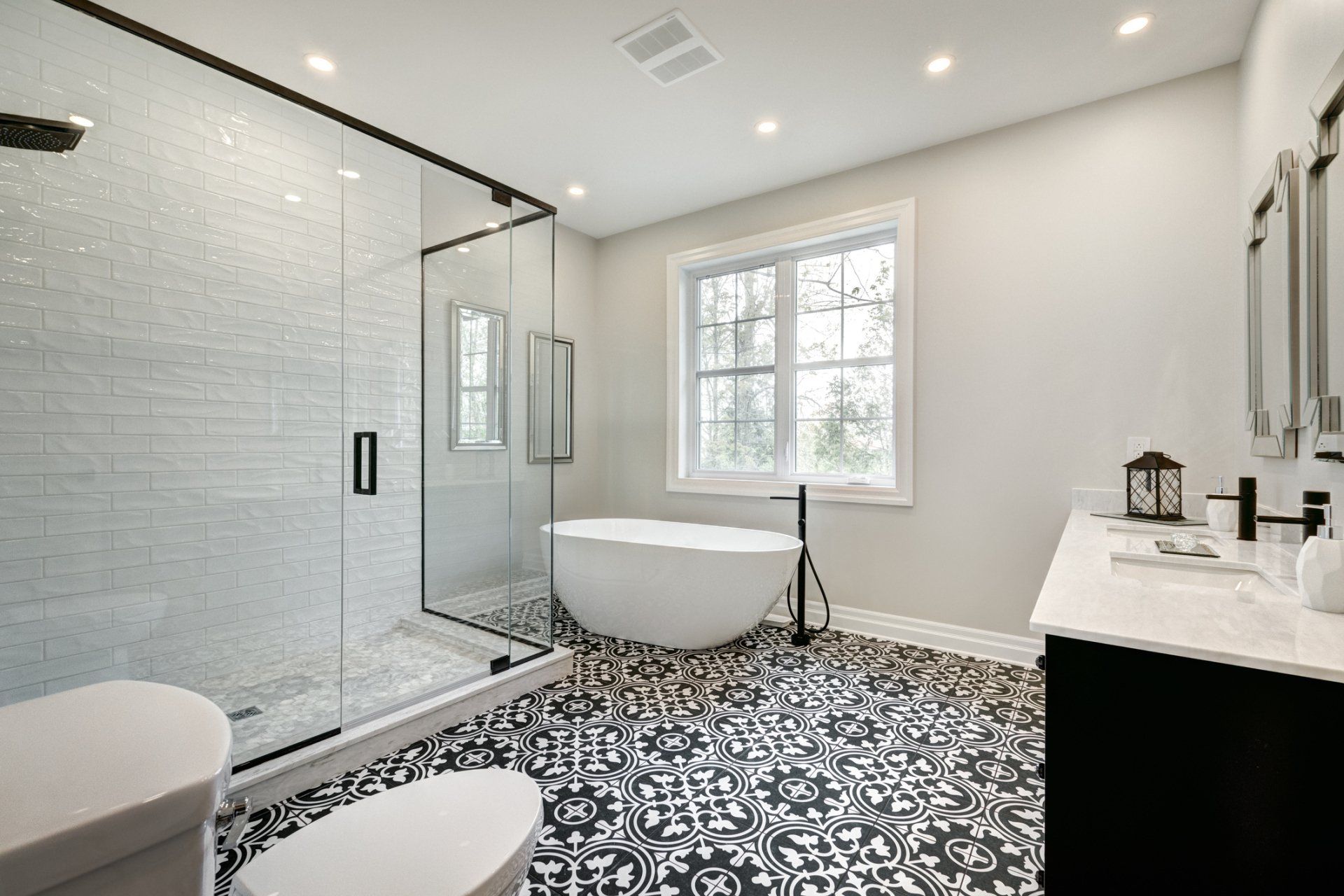Finishing Your Basement? 4 Basement Bathroom Plumbing Tips

If you have decided to finish your unfinished basement to use as an additional living space, then you may wonder if adding an additional bathroom downstairs is worth the extra hassle. While adding a bathroom to your finished basement can add time and work, a second bathroom can add value to a home and eliminate long bathroom wait times.
Learn four basement bathroom plumbing installation tips to make the bathroom addition process easier and help ward off future basement plumbing problems.
1. Choose Bathroom Placement Carefully
When working on your finished basement design, several places in your basement could fit a bathroom well. However, make bathroom plumbing installation easier by installing it directly under your first floor bathroom.
When you install your bathroom in this location, shorter plumbing pipes can run directly from the firstfloor bathroom to the new bathroom fixtures in the basement. If you install your basement bathroom in another location, connecting new bathroom pipes and fixtures to your existing plumbing system can be time-consuming and difficult and increase the cost and length of the project.
2. Install an Upflush Toilet
Before choosing your basement bathroom toilet, have a plumbing professional inform you of your home sewer line depth. The best toilet for your basement bathroom depends greatly on the location of this line.
While toilet flush mechanisms help perform the task of evacuating toilet contents after use, gravity also helps direct liquid waste to your home sewer line. For this reason, if your sewer line is deep in the ground, you can likely install a traditional toilet in your basement bathroom.
However, if your sewer line is more close to the ground, you may not be able to rely on the force of gravity when flushing and may need to install a special upflush toilet. This toilet type has a special pump that helps direct toilet waste toward your main sewer line more effectively than a standard toilet can.
Some upflush toilets also have macerators that grind solid waste up into fine particles before flushing to help prevent clogs in your bathroom pipes.
3. Equip Your Basement With a Backwater Valve
Some local plumbing ordinances require a backwater valve in all basements, especially those that have bathrooms.
What is a backwater valve? A backwater, or backflow valve, blocks sewage entry into your basement drains if you have a main sewer line backup. Sewer line backups can occur when a homeowner's sewer line clogs or when problems occur with the city's main sewer lines.
Most people don't want sewage backing up into their unoccupied basement drains. However, this backup can cause even more property damage and hassle when it backs up into an occupied basement.
4. Select Your Bathroom Pipe Materials Wisely
When installing new bathroom plumbing pipes, your plumber has many pipe types to choose from. While copper and polyvinylchloride (PVC) pipes are good options in some situations, cross-linked polyethylene (PEX) pipes are often ideal for basement bathroom applications.
PEX pipes are flexible, so their use can reduce the need for many joints in your bathroom plumbing lines. Many pipe leaks occur at joints that have degraded over time. The need for fewer joints also makes PEX pipe installation quicker and easier than the installation of alternative pipe materials so you can have decreased job times and labor costs.
Finally, since PEX pipes do not lose heat as copper pipes can, they are less likely to freeze when installed behind drywall than in other unheated areas of the basement.
If you have decided to finish your unfinished basement, then remember these basement bathroom plumbing tips for the basement bathroom. Contact the plumbing experts at Daytona Plumbing for all of your basement bathroom plumbingneeds today.






